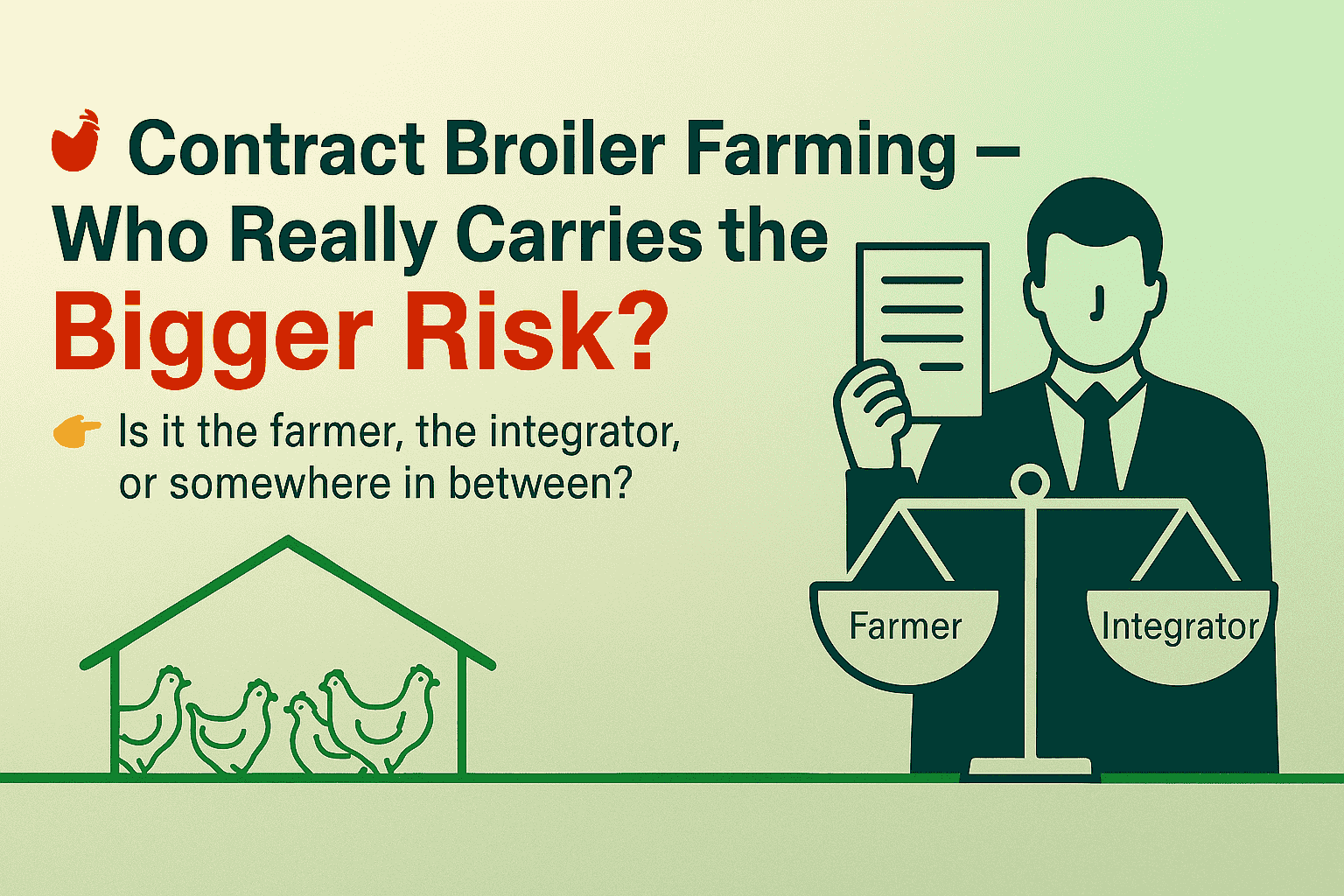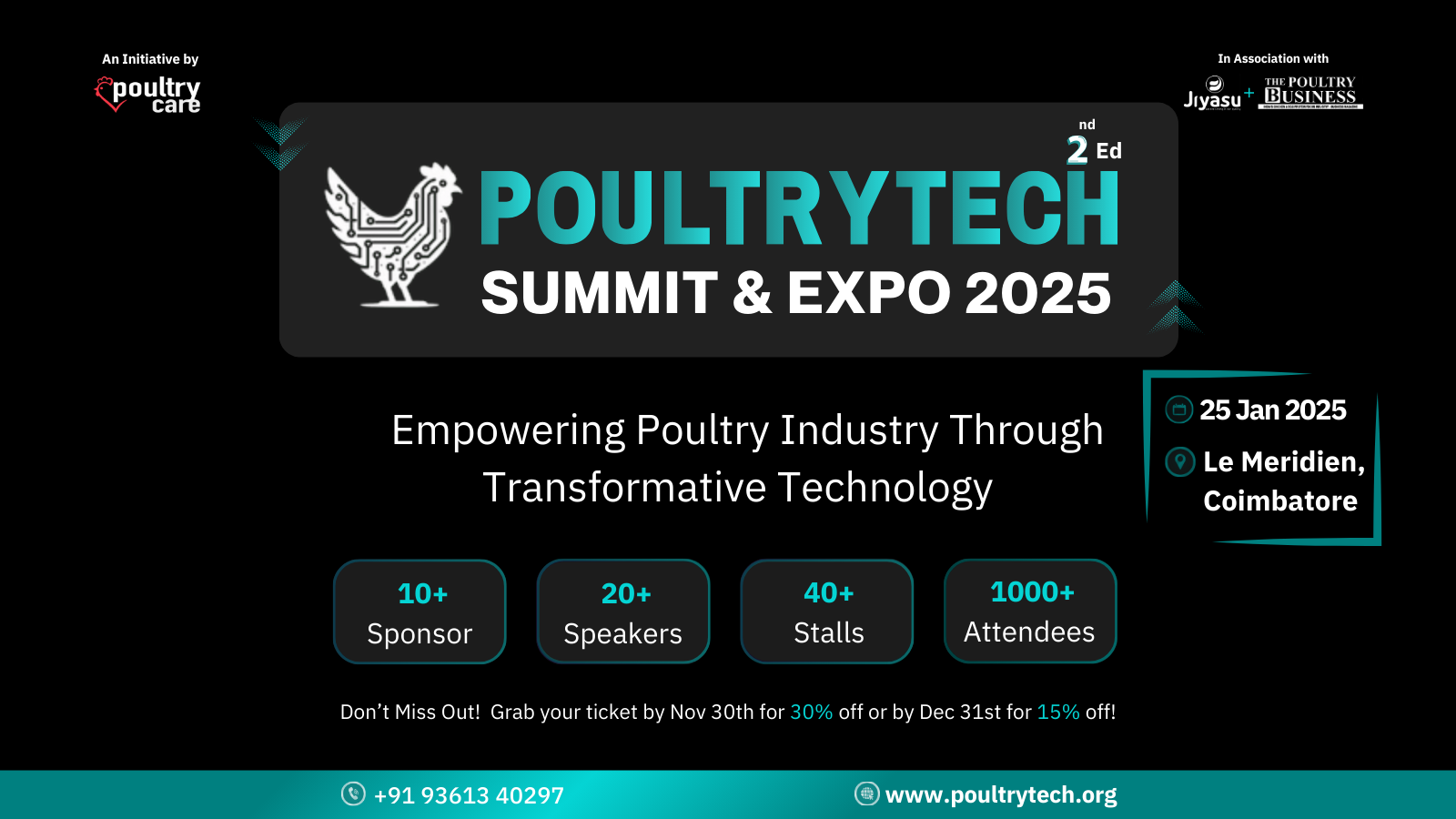In poultry farming there is always a silent question flying around the sheds Who really carries the heavier burden of risk in contract broiler farming Many farmers believe they hold the weight as they manage the birds every single day Integrators feel the heat from market volatility and price swings The truth lies somewhere in between but it is rarely spoken openly
Farmers often say A chicken may be silent but it teaches us the loudest lessons In this blog we will uncover the hidden realities of contract broiler farming understand who shoulders the true risks and see what can be done to balance the scale
Understanding Contract Broiler Farming
Contract broiler farming is an arrangement where integrators provide chicks feed medicine and technical support while farmers take care of daily management housing and labor At the end of the cycle birds are collected and farmers are paid based on weight and performance
On paper it looks like a win win arrangement Farmers do not worry about market fluctuations and integrators do not need to manage thousands of small farms directly But when reality hits both sides begin to feel the pinch
The Farmers Burden
Farmers often describe their role as walking on a rope without a net They face challenges like feed wastage bird mortality disease outbreaks and power failures These issues can happen in a single night and ruin weeks of hard work
Daily farm risks include
-
Disease pressure that spreads faster than fire
-
Fluctuations in temperature and power outages
-
Feed management and spillage losses
-
Labor shortages and handling mistakes
A farmer once said Even if the market price of chicken rises I cannot smile if my birds do not survive The risk sits in the shed with me every day
The Integrators Burden
Integrators carry a different but equally heavy load They are responsible for the cost of chicks feed vaccines and logistics If the market falls even by a small margin the losses can be huge
Their risks include
-
Market price crash and low demand
-
High cost of feed ingredients like maize and soybean
-
Logistics challenges in moving thousands of tons of feed and birds
-
Farmer performance variations across different sheds
An integrator once shared The bird does not understand the market but every kilogram of feed reminds me of the price outside
Shared But Not Equal
The reality of contract broiler farming is that risk is shared but not equally Farmers deal with the risks inside the farm Integrators deal with risks outside the farm Yet both depend on each other like two wheels of a cart If one wheel breaks the journey stops
Farmers say If one chick dies I lose a feather from my hat Integrators say If the market falls I lose the roof over my head This shows how risks may differ in nature but both are real
Balancing the Risk
The solution is not about pointing fingers but about building stronger bridges Farmers and integrators can reduce risks by adopting transparent systems better communication and data driven management
Best practices include
-
Regular training sessions for farmers
-
Data based monitoring of feed and bird performance
-
Clear agreements with fair performance incentives
-
Shared responsibility during disease outbreaks or natural calamities
As one proverb says A shared load is half a load
Why This Balance Matters
Contract broiler farming is the backbone of poultry production in many regions If farmers feel they are carrying more weight they lose motivation If integrators feel they are losing money they may cut costs or reduce support In both cases the bird suffers and so does the consumer
Balancing risks ensures sustainability profitability and trust It also builds a healthier future for poultry farming where both farmer and integrator walk side by side
Conclusion
Contract broiler farming is like a game of trust between farmer and integrator The risks are real and heavy but when shared wisely they become manageable The question Who carries the bigger risk should not divide Instead it should unite both sides to find solutions together
As farmers say A healthy bird brings a healthy pocket In the end the real winner is not just the farmer or the integrator but the poultry industry as a whole
👉 If you are a farmer or integrator reflect on your journey Which risks do you face most and how can you balance them with your partner The answer to that may decide the future of poultry farming




